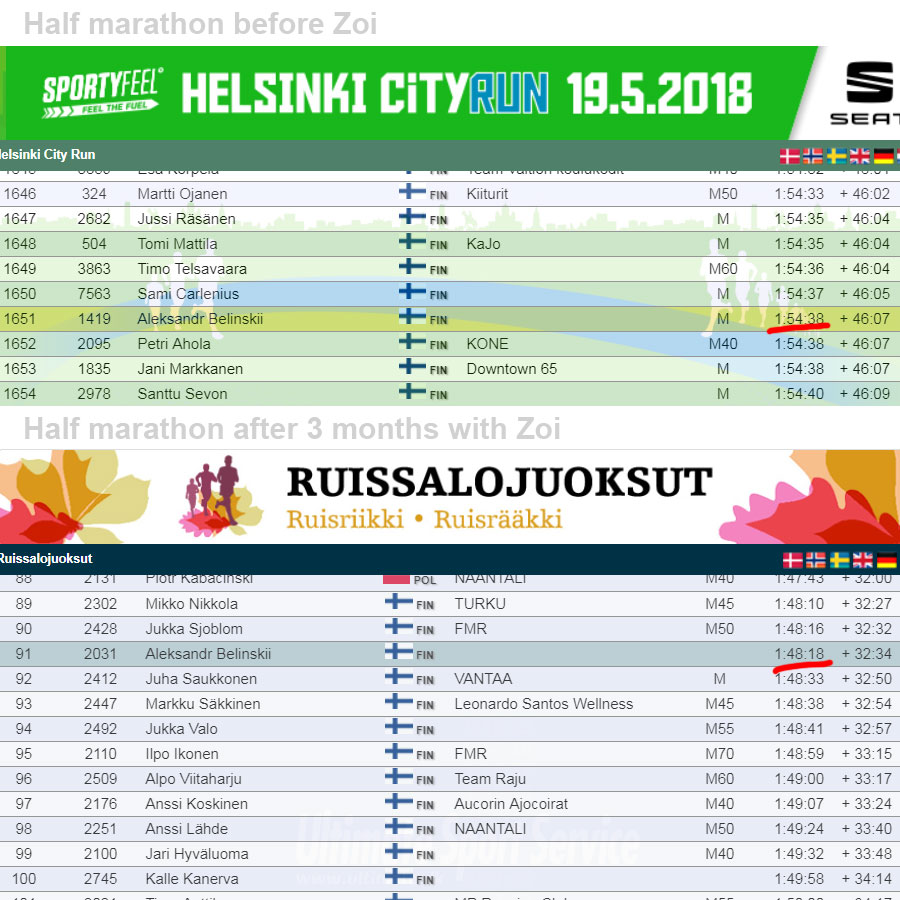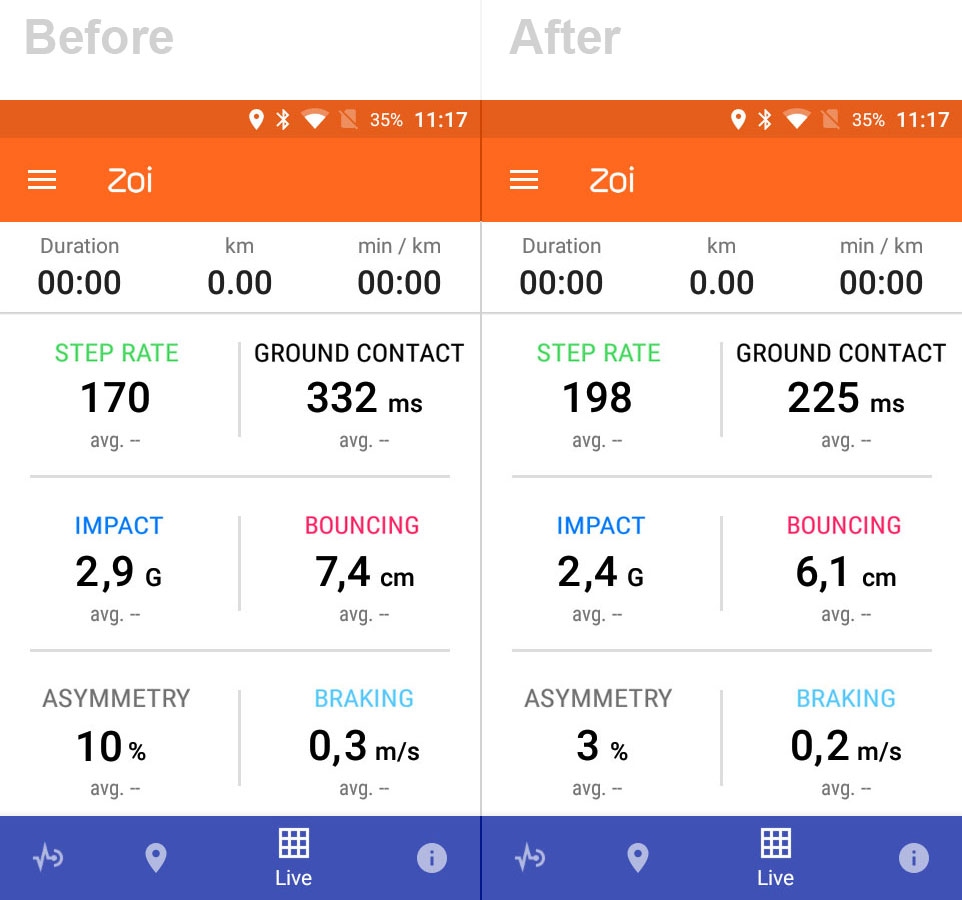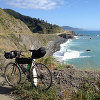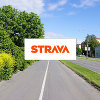Zoi, What's Wrong With My Running?


"Zoi, what's wrong with my running?"
Everything!
Like a real coach, Zoi gives you the kick in the butt you need. This masterpiece of technology saved my knees and made me faster. Not to mention it's easy to use. Life is already full of computers and gadgets. I welcome something new only if it's simple enough for a chimpanzee and affordable enough for a college student.

It really is simple: your phone shows you all of the metrics on one screen, so you can experiment in real-time during your run.


Run a bit faster, and the step rate displayed on the smartphone screen increases. Real-time monitoring of your workout helps improve your running technique.
I ran using Zoi for three months, less than 10 kilometers per week. I quickly learned it's better to focus on one or two metrics at a time — the human brain just can't focus on six metrics simultaneously. Fixing asymmetry was my initial goal, but soon I realized having a higher step rate and lower bounce made me faster and less tired. How much faster? My speed gain from three months of Zoi training was about 6 minutes for a half marathon:

The first pic is my Helsinki City Run — a flat half marathon course, with only a few bridges. The second picture is Ruis Run at Ruissalo Turku, a half marathon in the forest full of steep hills. The weather was pretty much the same, but at Ruissalo my heart rate was about 10 bpm lower, in spite of of the harder course. I'm pretty sure the performance gain is due to improvements in my technique, cause the workout volume this summer was just recreational: 5km twice per week, only 10km weekly.

Running technique metrics explained:
Asymmetry. Good values are in the 3-6% range. My values were 9-12%, and that can be interpreted as a disaster. Really, I had to have an expensive injection in my knee because of it!
Breakage. Another extremely important and unique metric available only from Zoi. It shows how much you break your own run during every step you take. So the lower the better. Good values are around 0.05% of your speed, that means you want 0.2-0.3 at 5 minutes per kilometer. Higher values may be caused by flaws in technique like an overextended running gait. This precious feature already makes Zoi a worthwhile purchase. I can confirm there's nothing like this in my TomTom multisport nor in my wife's Garmin 735xt.
Bounce Rate. This shows how high you jump with every step. Jumping takes so much energy! The less you jump, the better. You can save power, save your knees and ankles, and get faster at the same time.
Impact is somewhat similar to bounce rate although the causes are different. Bounce rate significantly depends on your shoes and technique; whereas impact depends on your bounce rate, speed, and weight.
Step Rate is important, cause increasing the step rate is usually enough to improve all of the other metrics. After I increased my average step rate from 170 to 180-200, my bounce rate got lower and my improved technique led to more energy conservation. My speed and endurance also improved as a result. Not to brag, but my body impact metric decreased too, causing less damage to my spine and joints.
Ground Contact isn't super important — everything less than 300ms is ok.
Remember that all of these metrics depend on your speed — the faster you run the worse they get, c'est la vie. Ideally you want to run with the same speed so you can compare runs and track your progress. Accurate measurement of Asymmetry also requires a really flat track. I haven't done a comprehensive test of different running shoes yet, but I promise to compare the techniques I achieve in Asics, Hokka, Adios, and Vibram before the end of the season. There are so many shoes I can afford using the money I would've spent on an expensive Garmin watch. All I need is a smartphone that I already have and an affordable Zoi sensor. No hate mail please, but I'd say Zoi is even better then Garmin. After all, it shows more metrics, for example 'breakage' - one of the most important ones if you ask me.
Our smartphones are already smart enough to serve all of our needs. With some software and extra sensors they can do it all for free! No more expensive devices needed. This is what the Ambalco project is all about.
The most interesting part of this experiment was how people started talking to me at events. Some just ask how I run so easily at the same speed. Of course, they don't know how high my heart rate is, he-he. "Walking" with no jumps at about 200 steps per minute looks like an easy thing from the sidelines. Everyone believes I've got a superpower and they strategize about making negative splits together or overtaking the next pacekeepers. Well, maybe next time :-)






























